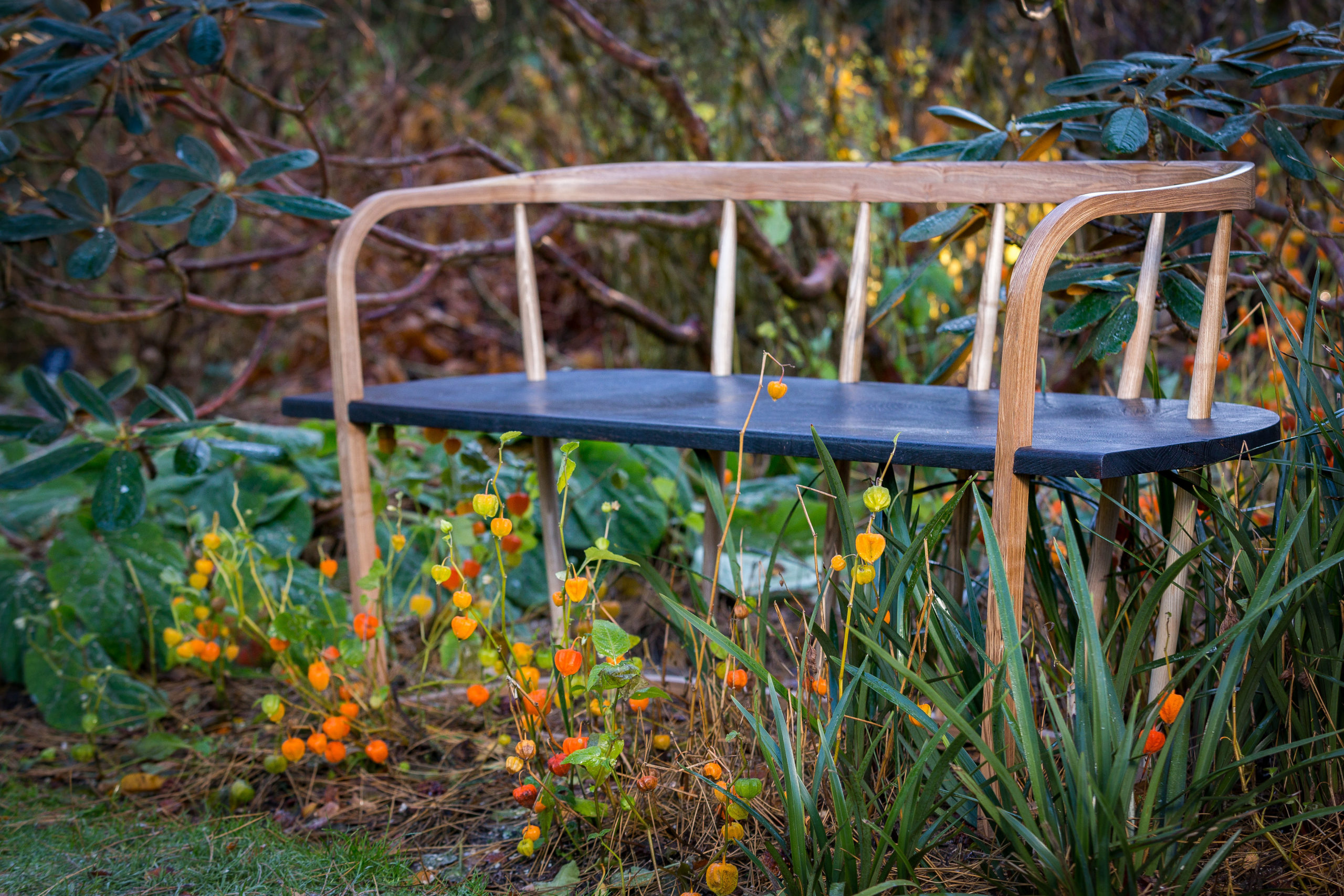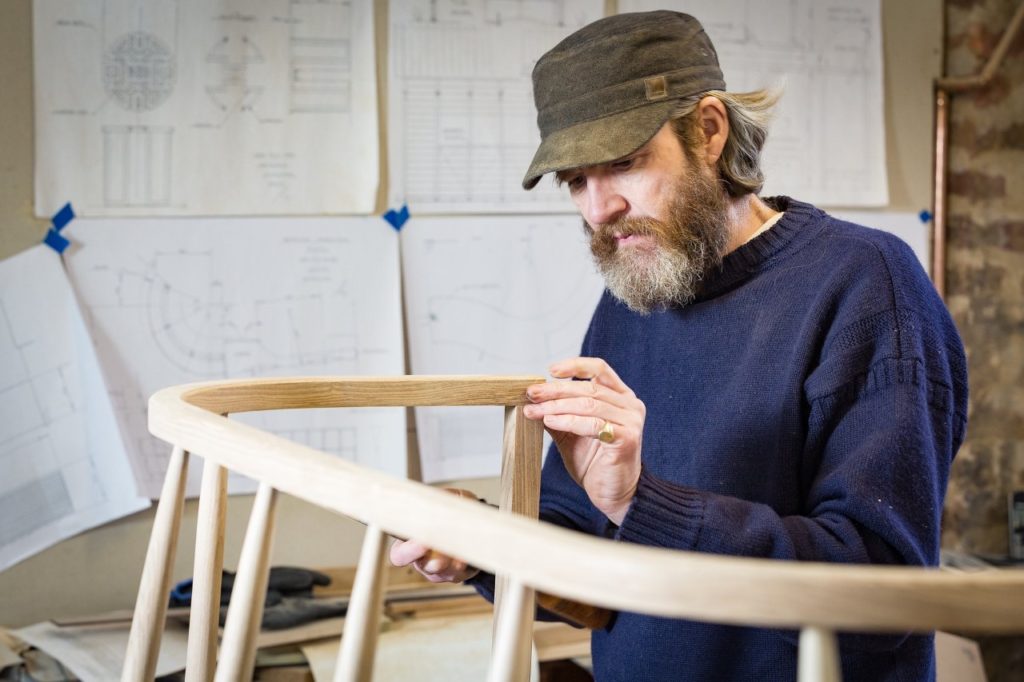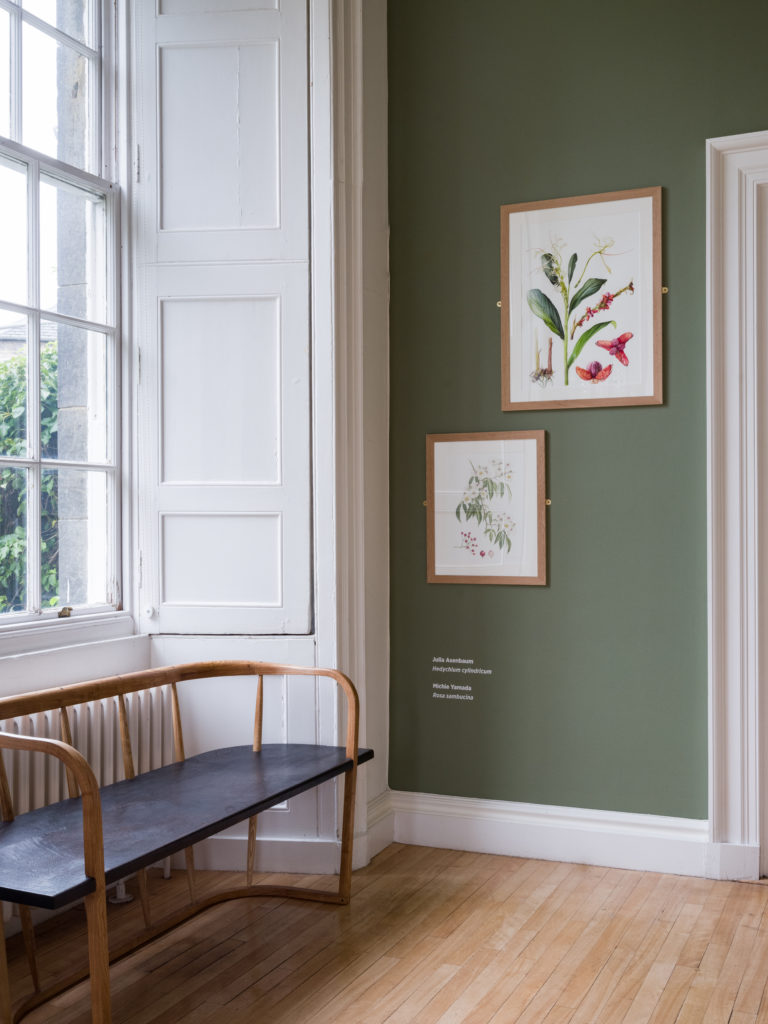On this year’s International Day of Forests, we are taking a look at our newest permanent work by Angus Ross, Resilience Bench, which took up residence in Inverleith House when we reopened between national lockdowns in October 2020.
Angus Ross, Resilience Bench, 2016
Scottish ash and ebonised oak from the Royal Botanic Garden Edinburgh.
First exhibited in After the Storm, RBGE, 2016; acquired in 2020.

Photo: Pavel Tamm, 2016.
Our former Head of Public Engagement, Ian Edwards, wrote in 2016 that the After the Storm project would be an opportunity for people to get involved in something with a strong and relevant message to our time. I doubt it could have been foreseen just how prescient his intention would become less than five years later.
With the experience of several lockdowns and restrictions almost behind us, it has at times felt much like a storm that just won’t pass, and ‘resilience’ has come to be one of the key concepts of the pandemic, particularly in relation to our financial and mental health.
Resilience enables us as individuals, communities and nations to cope with the stresses of our current situation. This ability to bounce back and sustain wellbeing in the face of challenges was central to the original message of Resilience Bench, and has never been more relevant than today.
__
After the Storm
In 2012, Cyclone Andrea tore through Scotland, taking care to include the Botanics in its path. The power of nature tore up the ground, felling more than 30 specimen trees within the Garden, one of which was a great Oak.
The wind-blown timber pieces were gathered up by the Scottish Furniture Makers Association (SMFA) following a discussion with RBGE, and subsequently transformed into the heart of an exhibition in the John Hope Gateway and accompanying publication, both titled After the Storm.

Ian Edwards wrote in a previous Botanics Story:
“Conversations with ecologists revealed how storms are essential for rejuvenating woodlands, creating gaps for regeneration and encouraging greater diversity of species and structure, building resilience and ultimately a healthier ecosystem… we began to explore ways of celebrating the role of storms which has led us, perhaps inevitably, to consider parallels with the human condition. People respond to traumatic changes in their life in the same way as woods: the pattern of devastation, recovery, regeneration and resilience is a familiar one. Our explorations have also considered the role diversity plays in post-traumatic recovery in both forests and people.”
Resilience Bench represents the joining together of three different woods, each of which inherently depicts resilience to maker Angus Ross. The dark surface of the seat originates from the Oak that lay in the Garden after the storm, the steam-bent frame from a Scottish Olive Ash, and the hand-turned spindles from another native Ash tree.
Conscious of the diseases that cause our native woodlands to suffer, Ross, who manages a 50-acre bluebell wood with a collective, was keen to incorporate the Ash tree to highlight the incurable and fatal Ash Dieback that can have a far longer lasting impact on a forest than any storm.
Looking at the bench, the beautiful seat of RBGE Oak appears delicately held by the spindles and the frame. The rich ebonised wood acting as both a division and a grounding between the spindles above and below. Angus Ross’ Studio explains:
“The dark surface symbolises the earth. The health of the earth maintains the health of the tree and its complex eco-system. The spindles connecting the top and bottom rails remind us of the connection between the root system and complex life in the soil below the surface with the thousands of species supported by a veteran oak tree above the soil.”

Employing a number of traditional techniques to ensure longevity and comfort, Ross has made the bench itself as resilient as possible. The Oak from the Garden was turned dark black using an ancient Japanese technique known as Shou Sugi Ban (焼杉板 / Yakisugi). Scorching and wire-brushing the surface preserves the wood, enabling it to live on in the form of a bench for the longest time possible.
The comfort of the seat’s surface has also been considered carefully – a detail often overlooked in a gallery environment. The gently undulating sculpted surface, with curves to fit those who choose to sit and rest or ponder, is much more inviting than that of a flat surface, encouraging one to spend more time reflecting – something I am sure we will all want to do when this storm has finally passed.

__
Resilience Bench was purchased by the Royal Botanic Garden Edinburgh in 2020 and delivered during the pandemic, once restrictions allowed. The bench has been shown in The Scottish Gallery, Edinburgh, 2019; The Design Centre, London, 2018; and Contemporary Applied Arts, London, 2017.
Resilience Bench can be found on the ground floor of Inverleith House and is RBGE’s second acquisition from Angus Ross, joining the Holding Bench, which was also part of After the Storm in 2016. Holding Bench can be found facing the pond outside Inverleith House.
Angus Ross is a Design Champion for V&A Dundee, Mentor for Crafts Council Hothouse Programme, Fellow of Design Nation, and Selected Member of Crafts Council UK, Craft Scotland and Contemporary Applied Arts London.
https://www.angusross.co.uk/
More about the UN’s International Day of Forests here.
